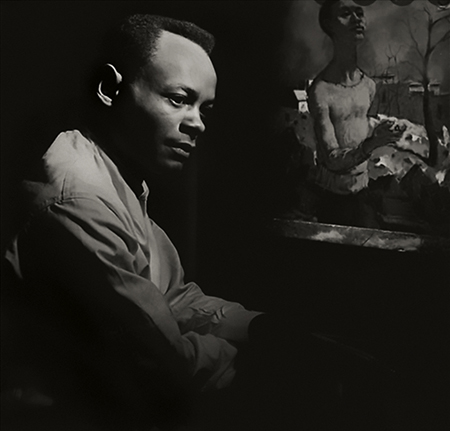
“Hughie Lee-Smith knew from an early age that art would be his ‘mission.’ A classically trained artist, his diverse influences range from the metaphysical imagery of the Italian painter Giorgio de Chirico to the romantic realism of Edward Hopper. Lee-Smith concedes, ‘In my case, aloneness, I think, has stemmed from the fact that I’m black. Unconsciously it has a lot to do with a sense of alienation.’
“Although his feelings about racial inequities or disharmonies have been inspirational, he seeks to create images that articulate his emotions about social and cultural disparity as it relates to all of humanity. His interest in people and their relationship to the world has been unwavering. While Lee-Smith’s dramas have included both black and white protagonists, they are almost always isolated in the landscape and from each other.
“Lee-Smith continues to explore the universality of human loneliness through his silent, mysterious images, always tempered with a cautious optimism about the prospect of restoration and equality.”
—Lynda Roscoe Hartigan, African-American Art: 19th and 20th-Century Selections, National Museum of American Art.
Hughie Lee-Smith hyphenated his middle and last name while in school so as to stand out from the other students named Smith. Lee-Smith served as president of his high school art club and received a scholarship to the Cleveland School of Art, where he studied painting. After a nineteen-month stint in the Navy as an official painter of patriotic, morale-raising scenes, Lee-Smith enrolled in Wayne State University on the GI Bill and earned a bachelor’s degree in art education. He later became the artist-in-residence at Howard University, where he supervised the creation of a series of murals that recognized the scientific and artistic achievements of African Americans.
In 1967, Lee-Smith became the first African American to receive full membership to the National Academy of Design since Henry Ossawa Tanner’s induction forty years earlier. Throughout his career, Lee-Smith supplemented the income earned through the sale of his paintings by teaching at various institutions, including Karamu House in Cleveland (a center for Black artists), the Princeton Art Association, and the Art Students League. During his lifetime, Lee-Smith’s work was often overshadowed by the abstract expressionist pieces so popular among collectors, though his paintings did not go completely unnoticed. Comedian Bill Cosby purchased three artworks for the set of his television series The Cosby Show, thereby exposing Lee-Smith’s paintings to millions of viewers.
—Smithsonian American Art Museum
